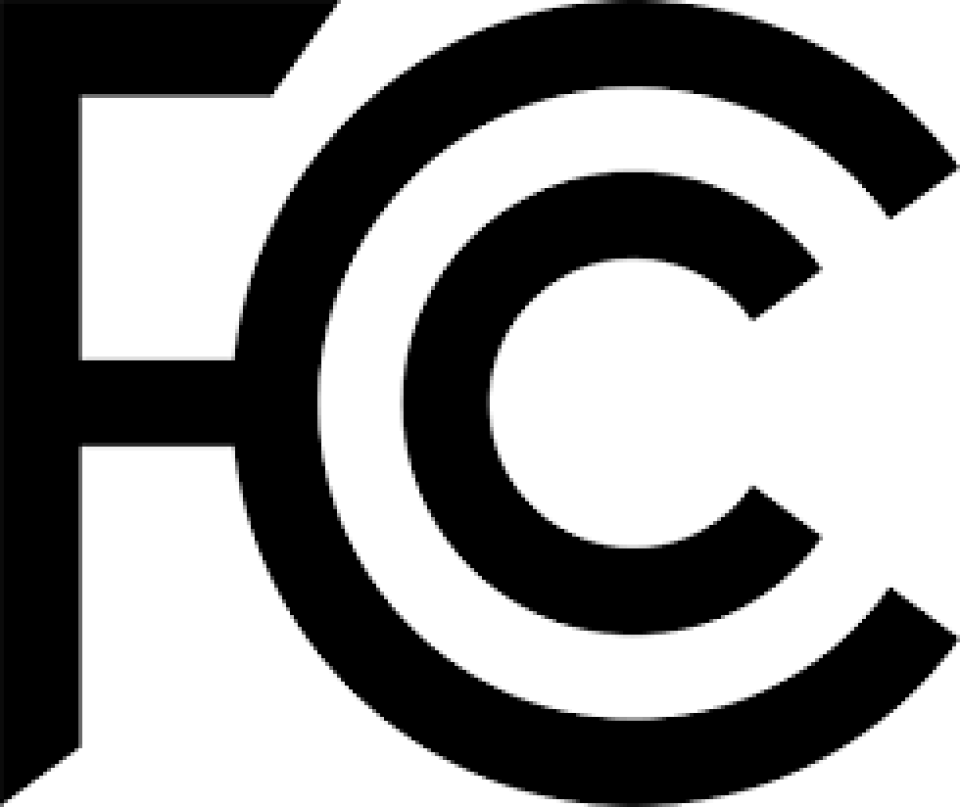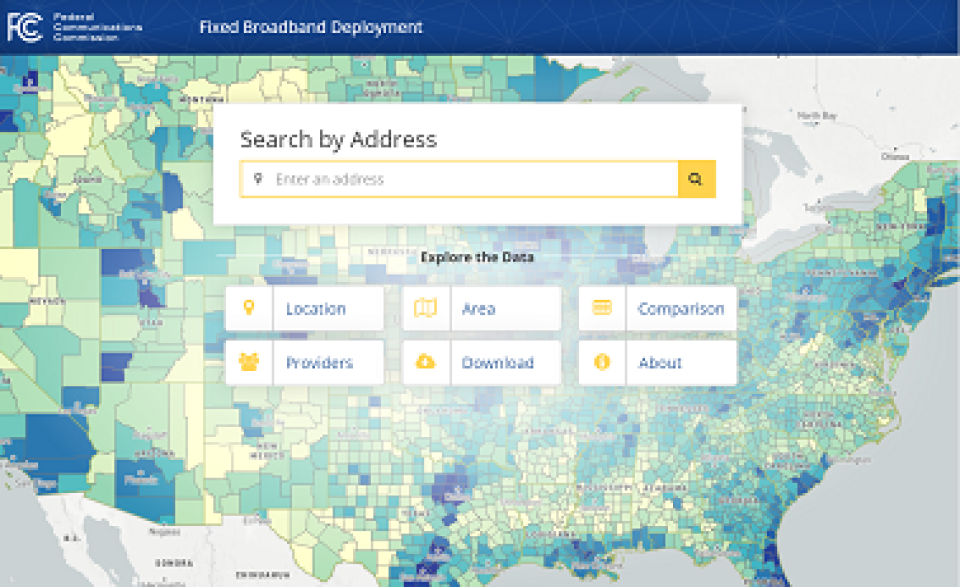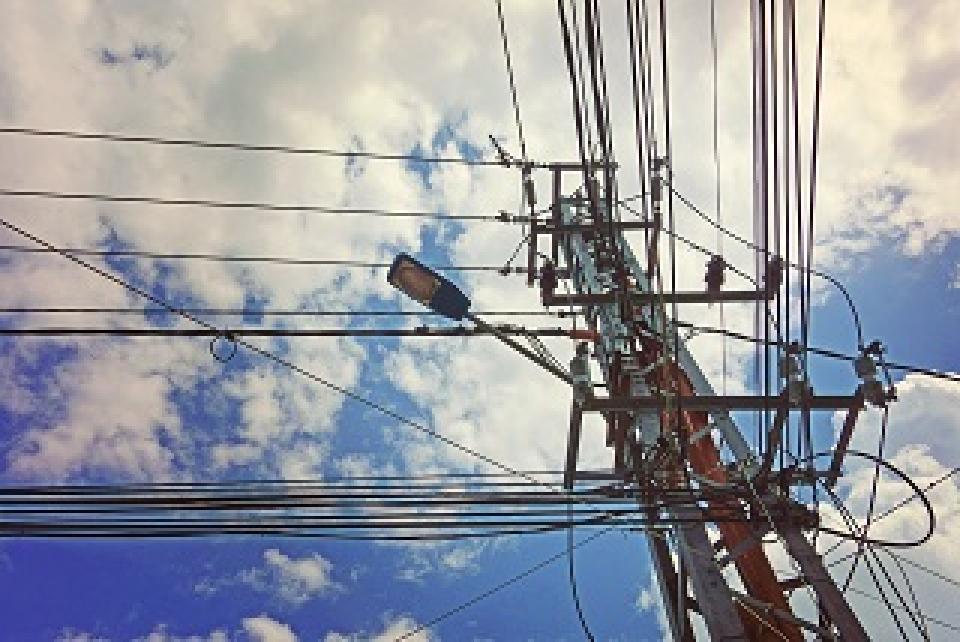
Fast, affordable Internet access for all.

If you have been following our series on the Accessible, Affordable Internet for All (AAIA) Act, you already know the proposed legislation calls for a $100 billion investment in expanding broadband access and affordability in unserved and underserved parts of the country. In this fourth installment of the series, we explore the part of the bill that contains the bulk of the funding. Of the $100 billion proposed in the bill, $85 billion of it can be found in the Title III - Broadband Access section.
Amending the Communications Act of 1934, Section 3101 of the bill appropriates $80 billion for “competitive bidding systems” to subsidize broadband infrastructure. That is to say, it requires the Federal Communications Commission (FCC), and states, to use “competitive bidding systems” for Internet Service Providers (ISPs) to bid on broadband deployment projects in “areas with service below 25/25 Megabits per second (Mbps), and areas with low-tier service, defined as areas with service between 25/25 and 100/100 Mbps.” The term “competitive bidding” seems to suggest a reverse auction process, though it hardly makes sense for each state to set up such a system given the logistical challenges. A legislative staffer responded to our email earlier this year saying he believed that language would allow for state programs that solicited applications from ISPs and scored them for evaluation, much like Minnesota’s Border-to-Border Broadband program operates. However, he noted that the FCC would interpret that language ultimately. More on this below.
Prioritizing Higher Upload Speeds


2020 is nearly over, and it's that time of the year we sit back with a cold glass of eggnog and reflect on what was, what is, what might have been, and what will be. In this episode of the Community Broadband Bits podcast the MuniNetworks team cranks up Zoom for the zillionth time this month to review our previous years' predictions to see who swung the hardest and missed back in 2019, and who might be hiding a secret gift at prognostication that would put Zoltar to shame.
With the departure of Lisa and Katie, GIS and Data Researcher Michelle Andrews is the only one who must reckon with her predictions head on. Also on the show are two recent arrivals: Senior Writer and Editor Sean Gonsalves, and Senior Researcher Ry Marcattilio-McCracken. Hannah Trostle returns from a short hiatus as well, to offer insight and secretly watch Chris to make sure he hasn't turned into a total despot. During the show we talk state preemption laws, progress by municipal networks, electric cooperatives, and county governments in expanding affordable broadband, the recent RDOF auction, New Hampshire, Sean's water feature, and our favorite stories of the year.
This show is 50 minutes long and can be played on this page or via Apple Podcasts or the tool of your choice using this feed.
Transcript below.
We want your feedback and suggestions for the show-please e-mail us or leave a comment below.
Listen to other episodes here or view all episodes in our index. See other podcasts from the Institute for Local Self-Reliance here.
Thanks to Arne Huseby for the music. The song is Warm Duck Shuffle and is licensed under a Creative Commons Attribution (3.0) license.
Image of John Dee’s Crystal ball by Vassil [CC0], from Wikimedia Commons.
Without good information from Internet Service Providers (ISPs), the federal government is essentially shooting in the dark when it comes to determining how to best target the allocation of resources for underserved and unserved communities. Even private sector investments are less efficient because of the lack of good data about broadband availability and pricing. That’s why the second major section of the Accessible, Affordable Internet for All Act (AAIA), currently languishing in the U.S. Senate, aims to address the nebulous nature of broadband data at the Federal Communications Commission (FCC).
In this third installment of our series on the AAIA, we explore the ”Title II – Broadband Transparency” section of the Act, which requires the FCC to adopt rules to gather accurate and up-to-date information from ISPs about broadband service plan prices and subscription rates. It also requires the FCC to collect data that will allow the federal government to assess the resiliency of the nation’s broadband network in the event of a natural disaster or emergency.
Better Data is Needed
Anyone who closely follows FCC news is already familiar with the problems associated with the agency’s broadband coverage maps, which most experts agree overstate actual broadband coverage. Though recent studies indicate there may be as many as 41 million people who lack access to fixed broadband in the United States that meets minimum speed of 25/3 Megabits per second (Mbps), the FCC claims that number is closer to 18 million. It’s a big discrepancy with big dollar implications, as the coverage maps are the basis upon which agencies and states make major funding decisions.
Last week we began our broad overview of the Accessible, Affordable Internet for All Act, sweeping legislation that calls for a $100 billion investment in broadband infrastructure in unserved and underserved parts of the country, as well as federal funding and coordinated support to meet the myriad of barriers that prevent tens of millions of Americans from having access to affordable and reliable Internet connectivity.
The bill (H.R. 7302) has already passed in the U.S. House of Representatives led by House Majority Whip James E. Clyburn (D-SC) and members of the House Rural Broadband Task Force. The Senate version of the bill (S. 4131), which was filed by Minnesota Senator Amy Klobuchar, co-chair of the Senate Broadband Caucus, has stalled, thanks to Senate Majority Leader Mitch McConnell who has “has buried the legislation in his graveyard,” in the words of Rep. Clyburn.
In this second-installment of a series of posts exploring the major sections contained in the proposed legislation, we look at the “Title I – Digital Equity” portion of the bill.

New Office of Internet Connectivity and Growth (OICG)
Join us for the next episode of Connect This! on Monday, December 14th, at 5:00 pm ET, where Christopher will be joined by Travis Carter (CEO, US Internet), Sarah Morris (Director, New America's Open Technology Institute), and Doug Dawson (President, CCG Consulting) to discuss what we might expect from the federal government on broadband next year.
Watch on YouTube Live or below or listen to audio below below.
States have gotten creative over the last half year in making use of CARES Act funding to improve connectivity for families and students, but one project in Mississippi shows that oftentimes a good old Fiber-to-the-Home (FTTH) build is best. The West Jasper School District (enrollment 1,700), sixty miles southeast of Jackson, partnered with telephone and network operator TEC to do just that with a project aimed at bringing Internet access to 125 families that do not have it in the area.
Reaching the Unconnected
The effort is funded by $390,000 in CARES funding via the Mississippi Pandemic Response Broadband Availability Act managed by the Mississippi Department of Education. The initiative was established by HB 1788, which aimed at “providing payments to eligible Mississippi public school districts, independent schools and Native American tribal school districts . . . as equitably and efficiently as possible after determining the unserved areas of the state . . . to increase or gain broadband access.” It passed both chambers unanimously in July, allocating $50 million for the effort.
Ten miles of new fiber were installed along County Road 12 to bring 135 previous unconnected homes online to TEC’s (a regional telephone and broadband company which offers services in Tennessee, Alabama, Louisiana, and Mississippi) network at the end of November. Current users connected to its fiber infrastructure can choose between symmetrical 250 Mbps, 500 Mbps, and gigabit tiers for $55/month, $65/month, and $80/month respectively.
School District Superintendent Warren Woodrow said of the project:
We felt like the best use of it would be to put fiber in the ground and to serve our students and our community.
As House GOP leaders ask the Government Accountability Office to audit the U.S. Department of Agriculture (USDA) ReConnect program because of concerns federal funds are being used to “overbuild,” Democratic leaders in the House and Senate have filed legislation that aims to build broadband infrastructure on a national-scale.
The Accessible, Affordable Internet for All Act is a bill that harkens back to when the federal government – through FDR’s Rural Electrification Administration, established in 1935, and the Rural Electrification Act, passed by Congress in 1936 – invested in local cooperatives and brought electricity to the abundance of Americans still living in candle-lit homes without electrically-powered refrigerators.
The proposed legislation may well frame the Democratic agenda on broadband moving forward, as the Biden administration enters the White House in January. It’s a bold bill that has garnered the support of a who’s-who of broadband experts and advocacy organizations from Public Knowledge, the National Consumer Law Center and New America Foundation’s Open Technology Institute to the Benton Institute for Broadband and Society, the Electronic Frontier Foundation, and the National Digital Inclusion Alliance.
Breaking it Down
There’s a lot to unpack in this bill, which is why we are publishing a series of posts exploring the major sections contained in the proposed legislation. This first installment is the 30,000-foot view. Forthcoming posts will examine the legislative details where the devil – or the better angels – can be found.

A pair of broadband bills in Pennsylvania (one of which has been signed into law by the governor, and the other having passed one chamber) represent a collective step forward for broadband by updating regulations and establishing a broadband grant program so as to promote network expansion in rural and unserved parts of the state of Pennsylvania.
Fewer Restrictions, More Money
The first is House Bill 2438 [pdf], which allows electric cooperatives to use existing easements for an affiliate to deliver broadband service without re-negotiating with property owners. The bill also allows cable companies to use cooperative-owned poles with permission and in accordance with existing rates and regulations. It’s designed to make it faster, cheaper, and easier to bring Internet access to rural parts of the state.
Johnstown Area Regional Industries entrepreneurial coach Blake Fleegle said of the legislation:
Every county in our region is looking at bringing high-dollar earners to our region. Employers are finding people can be just as effective working in Johnstown as they would be in Washington, D.C., or Pittsburgh. But they need to connect, and that's where broadband comes into play.
Chad Carrick, President and CEO of REA Energy Cooperative, likewise welcomed the legislation while emphasizing the role electric co-ops will play in the state:
It may be hard for some to believe, but there is a good 40% of Indiana and Cambria counties that either don't have broadband Internet access or it's not up to snuff, according to our surveys to our membership.
2438 passed the state House in June, the Senate at the end of October, and was signed into law by the governor at the end of last month.
As the nation’s eyes are riveted on the political divide in Georgia and the implications it has for the balance of power in the U.S. Senate, many state residents are also keeping an eye on the digital divide in the Peach State with an aim to expand broadband service to rural residents.
Georgia’s not-for-profit, member-owned electric membership cooperatives (EMCs) are promoting a new “Georgia Solution” to bring more broadband connectivity to the state’s rural regions.
That’s what the statewide trade association representing Georgia’s 41 electric cooperatives is calling its unique “roll out the red carpet” initiative as they hope to lure private Internet Service Providers (ISPs) to expand broadband service now that state lawmakers passed the Georgia Broadband Opportunity Act during the 2020 Georgia General Assembly.
The law, signed by Governor Brian Kemp in August, authorizes the Georgia Public Service Commission (PSC) to set “rates, terms, and conditions for pole attachments between communications service providers and electric membership corporations and their broadband affiliates.”
Filed on October 23 with the state’s PSC to consider for approval, the “Georgia Solution,” aims to entice private ISPs with two “generous and unprecedented offers” -- the “One Buck Deal” and the “Georgia One-Touch-Make-Ready Program.”

Two-Part “Georgia Solution”
Almost 54,000 electric cooperative residents will see the benefits of a statewide law change in Maryland after a summer filled with changes. After a state vote to allow deregulation, Choptank Electric, which serves member owners across nine counties in Maryland’s Eastern Shore, voted in August to become member-regulated so that the cooperative can pursue broadband projects in a part of the state that has long suffered from poor or no connectivity options.
A State Law and a Membership Vote
The process unfolded earlier this year, when representatives for the co-op spoke with the legislature in Annapolis about offering broadband to its members. State law at the time meant that electric utilities were regulated by the Public Service Commission, which prevented them from entering the broadband space.
The Eastern Shore sits across Chesapeake Bay, with 450,000 people living across its nine counties. Driven by a lack of connectivity options and a desire for economic development, area legislators submitted HB 999, which drew support from dozens of businesses, 1,200 current Choptank customers, and a number of local governments. The “Rural Broadband for the Eastern Shore Act of 2020” [pdf] passed the state legislature on May 8th, 2020, and freed the co-op from regulation by the Public Service Commission. Talbot County resident Pamela Keeton testified to the Senate Finance Committee:
The bottom line is, no one wants to pay taxes and no one wants to spend money, so we’re left with no Internet service.